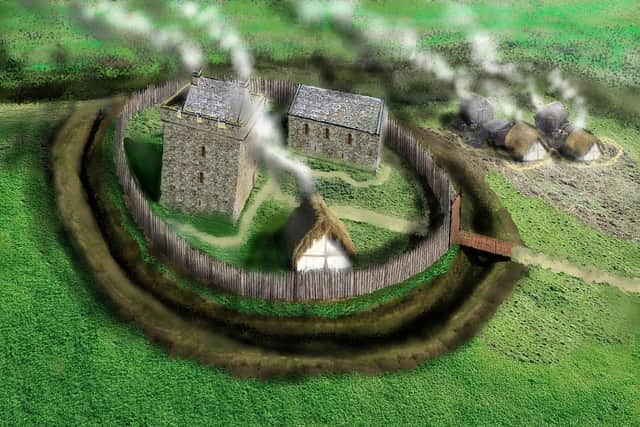Search for a lost Scottish Borders community destroyed by the English 500 years ago
Hundreds of people were burned out of their homes, farms and towers after 12,000 foot soldiers and 4,000 horsemen were sent north under the leadership of the Earl of Herftord to lay waste to the Merse, which lies between the Lammermuir Hills to the north and the River Tweed to the south.
In just two weeks, Tweedale and Teviotdale were devastated, with both ordinary homes and five abbeys among the targets given the earl’s instruction to "burn and destroy” the country “sparing neither castle, town, pele nor village”. In one afternoon alone, 12 fortifications in the valley of the Rule Water, a tributary of the Tweed, were attacked.
Advertisement
Hide AdAdvertisement
Hide AdThe attacks came as part of Henry VIII’s broader Wooing of Scotland as he tried in vain to break the Auld Alliance with France and flex his authority north of the border, where parliament had already rejected his move for Mary, Queen of Scots to be lined up to marry his son Edward.


Now, the stories of those whose lives were torn apart by the September 1545 attack will be brought to life after the Communities of the Twelve Towers of Rule received funding by the Society of Antiquaries of Scotland to piece together scarce and scattered archive records to create a fuller understanding of the economy, society and culture of the area.
Professor Jane Bower FSAScot, co-ordinator of the project and chair of the campaign for a Scottish Borders National Park, said: “Thanks to the grant from the Society of Antiquaries of Scotland, we can now commission a review of archival records to complement our recent archaeological findings, providing an important piece of the jigsaw puzzle to build up a picture of this late-medieval Borders community.”
The attack came seven months after the Scots victory over the English at the Battle of Ancrum Moor, with an enraged Henry VIII set for revenge.
Among 12 fortifications destroyed in the Rule valley was Bedrule Castle, which sits just east of the river between Jedburgh and Hawick, which was dubbed one of the ‘Twelve Towers of Rule’ in a letter sent to the King.
Recent geophysical investigations have uncovered evidence of burning at the Bedrule Castle site, with further investigations being carried out on the structures that framed the lives of residents in the medieval community.
As the project moves into archives research following the Society of Antiquaries Scotland funding, it will work with Richard Oram, professor of medieval and environmental history at the University of Stirling, to bring together records of life in the valley. The award is one of 15 given by the society to archaeological and historical researchers.
Dr Suzanne Lyle FSAScot, vice-president of the Society of Antiquaries of Scotland and Convenor of the Grants and Awards Committee, said: “Thanks to support from our fellows, each year we are delighted to offer funding to a number of researchers at different stages in their careers. The projects selected in 2023 demonstrate the high calibre and varied nature of research into Scottish history currently taking place across the globe, all of which will contribute to our understanding of Scotland's past.”
Comments
Want to join the conversation? Please or to comment on this article.